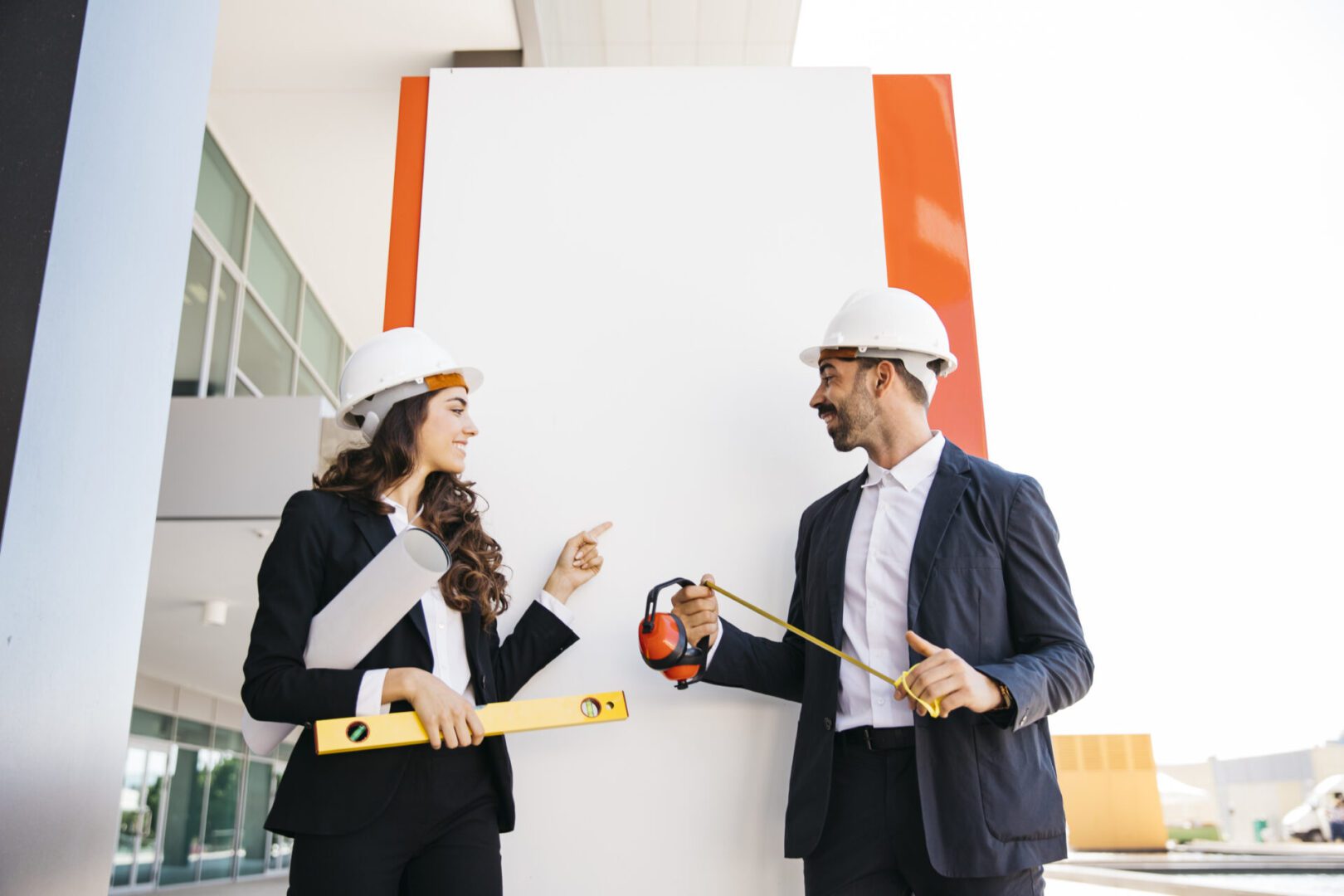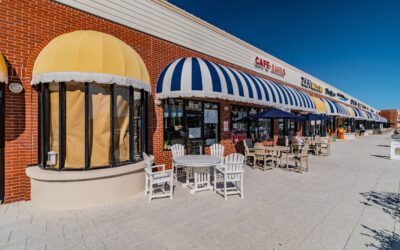In the expansive world of construction, two key players take center stage: industrial and commercial construction. While these terms might seem interchangeable, they represent distinct realms of building expertise. In this blog post, we’ll delve into the nuances of industrial and commercial construction, unveiling their unique characteristics, purposes, and the impact they have on the landscapes we inhabit.
Discover the perfect blend of aesthetics and functionality for your commercial venture. Contact Adkins Building & Construction to embark on a journey of innovative and tailored commercial construction solutions.
1. Commercial vs. Industrial Construction
Though both commercial and industrial construction involves building structures for businesses, their goals, design considerations, and regulatory requirements often vary significantly, leading to different procedures, codes of practice, and management practices between them.
When you’re looking for commercial general contractors in Florida, remember the distinctions between these two construction types and keep this in mind when choosing the appropriate approach for each one. While some may see them as similar in terms of location, design, scale, and permitting processes, understanding these can streamline building operations for maximum success on all fronts.
a. Defining Commercial Construction
Commercial construction projects primarily target structures to house offices, retail stores, and other businesses that serve customers. Their emphasis lies on functionality over aesthetics; structures must feature effective floor plans with sufficient storage capacity and provide enough power consumption to support all equipment that will be housed within.
Commercial construction is focused on drawing in customers. To do this successfully, home builders in Bradenton, FL, must prioritize an easy traffic flow that allows clients to enter and leave quickly and effortlessly, parking spaces for customers to use conveniently, as well as facilities to enhance customer experiences, such as fire suppression systems or handling hazardous materials, which may add weeks or months onto construction timelines.
b. What is Industrial Construction?
Industrial construction projects focus on manufacturing plants and other production facilities. Such structures must be large enough to house heavy machinery as well as any necessary technical components and have access to roads or railways to allow around-the-clock product transportation.
Industrial construction projects demand extensive planning and design. These endeavors often include the erection of power plants, factories, and other large structures with complex systems that must be managed to ensure business goals are fulfilled. Not only is a more expansive site plan necessary, but these types of jobs usually take longer due to specialized training requirements for contractors working on such complex jobs.
2. The Purpose Behind Industrial Building Construction
Industrial building construction encompasses the creation of structures designed to house businesses dedicated to manufacturing goods. Examples of such buildings are warehouses, assembly factories, and power plants. As opposed to commercial properties, which focus more heavily on aesthetic appeal and customer-service orientation, industrial buildings put emphasis on logistics, efficiency, and safety.
a. Catering to Manufacturing Needs
Industrial construction companies specialize in designing facilities to support large-scale production operations and manufacturing processes using specialized materials, equipment, and construction techniques. Such projects often present numerous engineering challenges that require highly experienced contractors for completion.
b. Specialized Infrastructure
Industrial buildings often feature specialized infrastructure such as high ceilings and reinforced flooring. This infrastructure supports the specific needs of manufacturing and large-scale production. Due to the inherent dangers associated with their operations, industrial construction sites must adhere to stringent safety protocols. Furthermore, they must abide by regulations regarding the handling and storage of hazardous materials – necessitating additional permitting and inspection processes that could delay completion.
Experience industrial construction that transcends expectations. Partner with Adkins Building & Construction to construct facilities that align seamlessly with manufacturing needs, optimizing efficiency and functionality.
3. The Dynamics of Commercial-Industrial Overlap
Commercial and industrial construction are two distinct categories of projects, yet they may overlap at times. Commercial construction encompasses building, upgrading, and maintaining commercial entities such as retail stores, strip malls, hospitals, and offices. Such buildings must be functional yet aesthetically pleasing while remaining safe for visitors and employees. Industrial construction involves creating structures designed specifically for manufacturing or production processes requiring facilities with effective floor plans, efficient equipment storage solutions, and round-the-clock shipping and receiving capabilities – much different from commercial projects.
Understanding the distinctions between commercial and industrial construction project is critical for their successful outcomes. Both sectors serve distinct functions and require separate codes, management practices, and procedures to operate successfully.
Some structures seamlessly blend commercial and industrial functionalities. Warehouses with attached offices or showrooms exemplify the fusion of these two construction realms. Hybrid spaces meet the diverse needs of businesses that require both manufacturing and retail components. This flexibility caters to a range of industries with varied operational requirements.
Commercial and industrial projects must also receive approval from various governing bodies before being opened for business upon completion. While residential building permits typically address occupancy rules outlined by local guidelines, industrial projects often must satisfy requirements set forth by government agencies as well as industry-specific standards. They may need to undergo structural integrity verification in order to support heavy machinery while protecting workers – an additional factor that adds time and costs associated with projects.
4. Understanding the Differences: Commercial vs. Industrial Construction

Construction industry specialties vary significantly, and two of the more notable categories are commercial and industrial projects. Commercial projects focus on providing services directly to people – restaurants, retail centers, hospitals, physical fitness facilities, and offices are examples. Industrial construction, meanwhile, involves structures that manufacture goods – factories, power plants, and refineries are examples.
The distinctions between them are vast, as reflected by how each building is constructed. Key distinctions include location, design, and scale considerations when making decisions regarding each type of structure. Location is of paramount importance in commercial construction, as businesses need to be easily accessible to customers and presentable in order to maximize business. Furthermore, commercial buildings are designed with functionality in mind so as to meet the individual requirements of companies using them.
Industrial construction typically requires larger spaces for manufacturing and logistics purposes, often on the outskirts of cities, to make logistical access simpler. Furthermore, this project typically entails strict zoning, inspection, and permit requirements, more complex budgetary considerations, and higher levels of specialized machinery to complete successfully.
Turn your construction vision into a tangible reality with Adkins Building & Construction. Whether it’s commercial allure or industrial prowess you seek, our expertise ensures your project is in capable hands.
5. Commercial and Industrial Symbiosis
a. Mutual Dependence
- The success of many businesses depends on the symbiotic relationship between commercial and industrial spaces.
- Manufacturing facilities supply products to commercial outlets, creating a harmonious economic cycle.
b. Infrastructure Integration
- Infrastructure designed for industrial purposes often supports the logistics and supply chains of commercial enterprises.
- This integration contributes to the overall efficiency of both sectors.
Conclusion: Building Tomorrow’s Landscape
As we navigate the intricate world of construction, understanding the distinctions between industrial and commercial building is essential. From the aesthetic allure of commercial spaces to the specialized infrastructure of industrial facilities, each construction realm plays a pivotal role in shaping the environments where we work, shop, and create. In recognizing the unique attributes of both industrial and commercial construction, we lay the foundation for a future where these structures coexist in harmony, contributing to the diverse and dynamic tapestry of our built landscapes.
Explore the future of construction with Adkins Building & Construction. From commercial spaces that captivate to industrial structures that innovate, we’re here to shape the landscapes of tomorrow. Contact us today.




